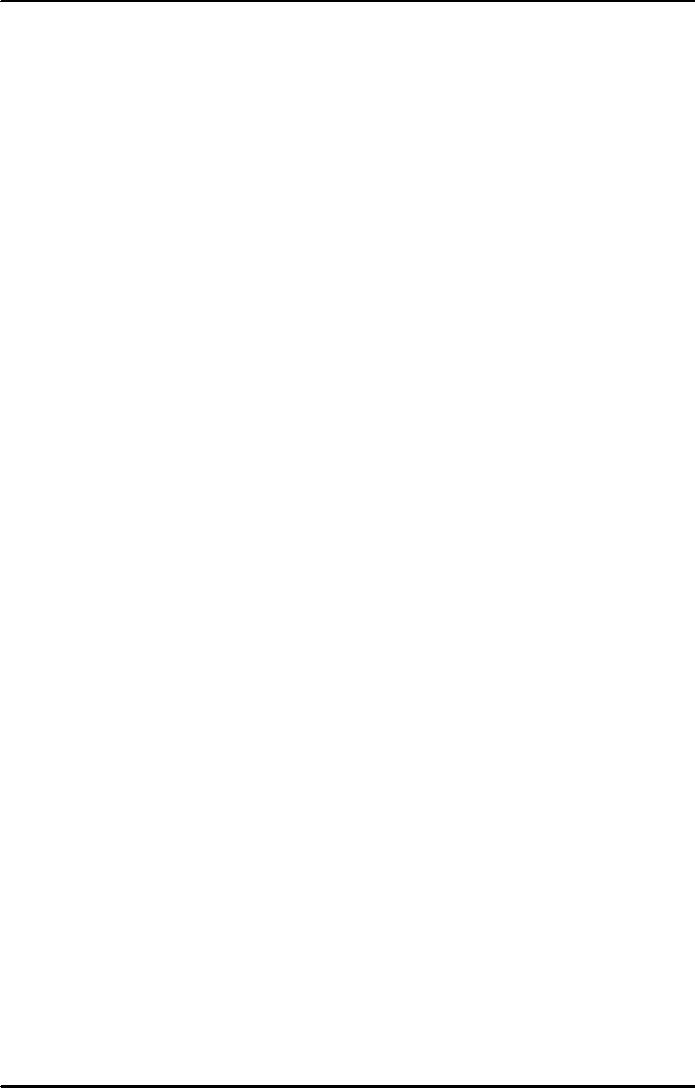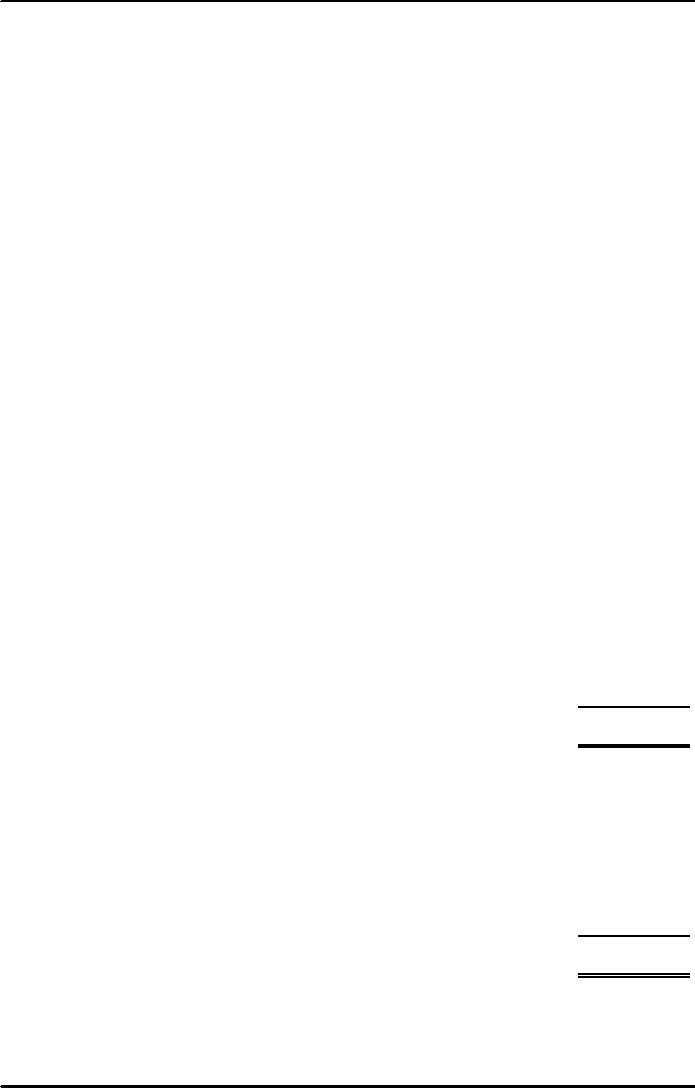 |

Corporate
Finance FIN 622
VU
Lesson
39
CURRENCY
RISKS
We
shall take care of following
topics in this hand out:
Future
payment situation hedging
Currency
futures features
CF
future payment in FCY
Money
Market Hedge future FCY
payment scenario
A
similar approach will be
taken to create the hedge
when a firm is expecting to
pay in FCY in future.
In
this
scenario, a hedge can be
created by exchanging local
currency for FCY now
using spot rates and
putting
the
currency on deposit until the future
payment is to be made. The amount
borrowed and the
interest
earned
on the deposit should be equal to the FCY. If it is
not the case then it will
not be a clean hedge.
The
cash
flows are fixed because the
cost in local currency is the
cost of buying FCY on spot
rates that was
put
under a
deposit.
Mechanism:
Step
1: determine the FCY (assume US $) amount
to be put to a deposit that
will grow exactly to
equalize
the
future payment in dollars.
You need to calculate this
using the available spot
rates and interest rate
on
dollar
deposit.
Step
2: in order to deposit dollars in
interest bearing account, the
company will buy dollars at
spot rates.
Step
3: the company will borrow
local currency for the
period of hedge.
These
steps will ensure that the
hedge created a definite
cash flow regardless of
exchange rate or
interest
rate
fluctuations. The exchange rate
has been fixed.
Currency
Futures:
A
currency future is a standard contract
between buyer and seller in
which the buyer has a
binding
obligation
to buy a fixed amount, at a fixed
price and on a fixed date of
some underlying
security.
Fixed
amount = contract size
Fixed
date = delivery date
Fixed
price = future price
Futures
are forward contracts traded
on future and option
exchanges. There are several
such exchanges
around the
world and although some
trade in similar forward
contracts, as a general rule each
exchange
specializes
in its own future contracts.
This means that if a company
wants of trade in future
contracts it has
to go to
exchange where those
contracts are traded.
Futures
are only traded on exchanges
using standardized contracts.
Each future contract is in particular
item
having identical
specification. For example,
every sterling contract has same
specification.
Settlement
of future contracts is made at
predetermined times during a year.
These are usually in
March,
June,
September and December each
year. This means, for
example, that sterling future
contracts are traded
on the
exchange for settlement in
these months.
Futures
are traded at a price agreed
between the buyer and the seller. This
price reflects the price of the
item
traded
by the contract.
Most
of the futures do not run to their
final settlement date. These
contracts may be cash
settled or physical
delivery
settled. With cash
settlement, there is payment in
cash from one party to the
other. With physical
delivery, the
underlying item is delivered by one party to
other.
When a
trader buys future, this represents
taking a long position in
futures. Such a trader having a
long
position
can close his position at
any time before the settlement date by
selling the same number of
contracts.
On the
other side, when a trader is
selling futures then it represent
his or her short position. It is
possible to
sell
future even you don't
have them. A trader who is in short
position can close her
position by buying the
same
number of future before the final
settlement date.
Ticks:
A tick
is the minimum price movement of a
contract. For example, the movement in
US$ / PKR rate
from
60.1501
to 60.1505, means the rate
has risen four ticks.
Every tick movement in price
has same money
value.
For example, sterling/us$ contract
standard size is sterling 62,500/-.
The price is in us$ and
tick size
is $
0.0001, which means each
tick value is $ 6.25. If a trader is
holding a long position and
price of future
increases,
then there's profit and
fall in value represents
loss. If trader is holding is short
position, rise in
future
value represent a loss, fall
in price profit.
Like
forward contracts, currency futures
have also two-scenario:
receipt of FCY and payment
involving
FCY.
133

Corporate
Finance FIN 622
VU
Currency
Market Hedging FCY
payment in future:
A
company might have an
exposure to a future payment in a
foreign currency. It can
hedge the exposure by
arranging
to buy the currency forward
using futures.
When
the payment is actual made, the
currency to make the payment should be
purchase spot. The
futures
position
should be closed. If there is a gain on
the future position, this might be
used to make some of
the
payment.
Example
currency futures
Scenario
- future payment in
FCY
A Pak
company bought goods for $
900,000/- in December and
needs to settle in May. Due
to the
sensitivity of
exchange rate of $/PKR the
company intends to hedge this transaction
exposure with
currency
futures. The spot rate
when the goods were
purchased was us$ 1 = PKR
60.1559. The $/PKR
May
futures contract is currently priced at us $ 1 = PKR
60.1585.
Assuming
that the spot rate when
goods are paid is US$ 1 =
PKR 60. 2171 and
June futures is priced at us$
60.2201.
How
can company hedge this
transaction with currency
future?
US
$
900,000.00
SPOT
RATE DECEMBER
PKR
60.1559
FCY
FUTURE - DEC
PKR
60.1585
SPOT
RATE JUNE
PKR
60.2171
FCY
FUTURE - JUNE
PKR
60.2201
BUY
IN DECEMBER AND WILL SELL IN
JUNE.
PKR/$
US$
PKR
DECEMBER
- FCY FUTURES
PURCHASED
60.1585
900,000.00
54,142,650.00
IN MAY - WHEN
PAYMENT WILL BE MADE
IN US
$
60.2201
900,000.00
54,198,090.00
GAIN ON
SALE OF FCY
CONTRACTS
55,440.00
MAY
- NEED TO
BUY US $ AT SPOT RATES
TO
60.2171
900,000.00
54,195,390.00
MAKE
PAYMENT
LESS:
PROFIT / GAIN ON FCY
FUTURES
(55,440.00)
NET
COST
54,139,950.00
EFFECTIVE
EXCHANGE RATE
54,139,950.00
900,000.00
60.1555
134
Table of Contents:
- INTRODUCTION TO SUBJECT
- COMPARISON OF FINANCIAL STATEMENTS
- TIME VALUE OF MONEY
- Discounted Cash Flow, Effective Annual Interest Bond Valuation - introduction
- Features of Bond, Coupon Interest, Face value, Coupon rate, Duration or maturity date
- TERM STRUCTURE OF INTEREST RATES
- COMMON STOCK VALUATION
- Capital Budgeting Definition and Process
- METHODS OF PROJECT EVALUATIONS, Net present value, Weighted Average Cost of Capital
- METHODS OF PROJECT EVALUATIONS 2
- METHODS OF PROJECT EVALUATIONS 3
- ADVANCE EVALUATION METHODS: Sensitivity analysis, Profitability analysis, Break even accounting, Break even - economic
- Economic Break Even, Operating Leverage, Capital Rationing, Hard & Soft Rationing, Single & Multi Period Rationing
- Single period, Multi-period capital rationing, Linear programming
- Risk and Uncertainty, Measuring risk, Variability of return–Historical Return, Variance of return, Standard Deviation
- Portfolio and Diversification, Portfolio and Variance, Risk–Systematic & Unsystematic, Beta – Measure of systematic risk, Aggressive & defensive stocks
- Security Market Line, Capital Asset Pricing Model – CAPM Calculating Over, Under valued stocks
- Cost of Capital & Capital Structure, Components of Capital, Cost of Equity, Estimating g or growth rate, Dividend growth model, Cost of Debt, Bonds, Cost of Preferred Stocks
- Venture Capital, Cost of Debt & Bond, Weighted average cost of debt, Tax and cost of debt, Cost of Loans & Leases, Overall cost of capital – WACC, WACC & Capital Budgeting
- When to use WACC, Pure Play, Capital Structure and Financial Leverage
- Home made leverage, Modigliani & Miller Model, How WACC remains constant, Business & Financial Risk, M & M model with taxes
- Problems associated with high gearing, Bankruptcy costs, Optimal capital structure, Dividend policy
- Dividend and value of firm, Dividend relevance, Residual dividend policy, Financial planning process and control
- Budgeting process, Purpose, functions of budgets, Cash budgets–Preparation & interpretation
- Cash flow statement Direct method Indirect method, Working capital management, Cash and operating cycle
- Working capital management, Risk, Profitability and Liquidity - Working capital policies, Conservative, Aggressive, Moderate
- Classification of working capital, Current Assets Financing – Hedging approach, Short term Vs long term financing
- Overtrading – Indications & remedies, Cash management, Motives for Cash holding, Cash flow problems and remedies, Investing surplus cash
- Miller-Orr Model of cash management, Inventory management, Inventory costs, Economic order quantity, Reorder level, Discounts and EOQ
- Inventory cost – Stock out cost, Economic Order Point, Just in time (JIT), Debtors Management, Credit Control Policy
- Cash discounts, Cost of discount, Shortening average collection period, Credit instrument, Analyzing credit policy, Revenue effect, Cost effect, Cost of debt o Probability of default
- Effects of discounts–Not effecting volume, Extension of credit, Factoring, Management of creditors, Mergers & Acquisitions
- Synergies, Types of mergers, Why mergers fail, Merger process, Acquisition consideration
- Acquisition Consideration, Valuation of shares
- Assets Based Share Valuations, Hybrid Valuation methods, Procedure for public, private takeover
- Corporate Restructuring, Divestment, Purpose of divestment, Buyouts, Types of buyouts, Financial distress
- Sources of financial distress, Effects of financial distress, Reorganization
- Currency Risks, Transaction exposure, Translation exposure, Economic exposure
- Future payment situation – hedging, Currency futures – features, CF – future payment in FCY
- CF–future receipt in FCY, Forward contract vs. currency futures, Interest rate risk, Hedging against interest rate, Forward rate agreements, Decision rule
- Interest rate future, Prices in futures, Hedging–short term interest rate (STIR), Scenario–Borrowing in ST and risk of rising interest, Scenario–deposit and risk of lowering interest rates on deposits, Options and Swaps, Features of opti
- FOREIGN EXCHANGE MARKET’S OPTIONS
- Calculating financial benefit–Interest rate Option, Interest rate caps and floor, Swaps, Interest rate swaps, Currency swaps
- Exchange rate determination, Purchasing power parity theory, PPP model, International fisher effect, Exchange rate system, Fixed, Floating
- FOREIGN INVESTMENT: Motives, International operations, Export, Branch, Subsidiary, Joint venture, Licensing agreements, Political risk